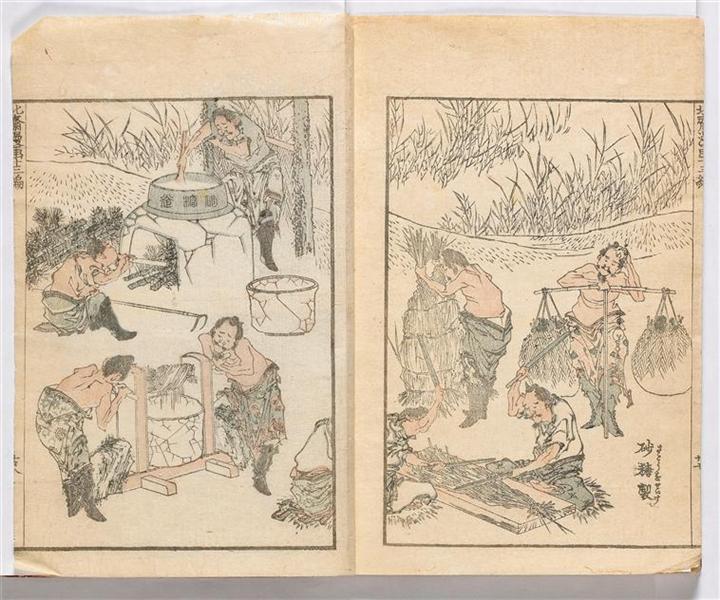Opis
Katsushika Hokusai's work "Manga" is a fascinating testament to the mastery of one of the greatest artists in the history of Japanese art. Part of a series of volumes of illustrative drawings published between 1814 and 1878, this painting reveals the intimacy of the ukiyo-e style, while showcasing Hokusai's ability to capture the essence of his contemporaries and the world around them.
Looking at this particular work, one perceives a dynamic display of shapes and lines that seem to vibrate on the paper. The composition is not simply a collage of images; each element is meticulously orchestrated, allowing for a visual fluidity that invites the viewer to move through the painting, as if one were immersed in the illustrated scene themselves. The lines are delicate yet firm, a hallmark of Hokusai, who manages to infuse both movement and stability into his configurations.
The use of color in this “Manga” is subtle, playing with soft tones that evoke the serenity of nature. The shades of blue, green, and brown that predominate in the piece are not only evident in the backgrounds, but are also reflected in the details, suggesting a tonal balance that resonates with Japanese aesthetic philosophy. Hokusai, known for his keen ability to capture the natural environment, conveys here an almost poetic connection between humans and the natural world around them.
Although no specific characters appear as protagonists in this work, Hokusai uses human beings in a variety of everyday activities, indicating a broader social context. Here we find groups in different attitudes and occupations, representing aspects of urban and rural life of his time. Through these gestures and postures, Hokusai manages to tell individual stories, each rich in emotional and cultural nuances.
One of the most interesting aspects of this composition is its ability to go beyond a simple visual representation; Hokusai delves into an exploration of observation and letting go. His style is characterized by the constant search for new ideas and experimentation. “Manga,” which literally translates as “informal drawings,” reflects his artistic drive to capture not only form but also the essence of life itself. This desire to imbue a sense of movement and life really parallels the currents that would later emerge in Western art, where the study of gesture and expression would take center stage.
Hokusai not only excelled in creating woodblock prints, but also dabbled in painting and illustration. “Manga” can be seen as one of the earliest instances of comics or cartoons in art history, thus evidencing his lasting influence on Japanese visual culture and beyond. His legacy extends not only to his technique, but also to the conception of how representational forms can narrate life and human experience.
In conclusion, Katsushika Hokusai's "Manga" is a work that draws on keen observation and artistically crafted synthesis of the everyday, a representation not only of forms, but of human experience in its broadest expression. Approaching the work, viewers are invited to appreciate not only the technical complexity, but also the deep connection between art, nature and social life, making this work a vital modulator in the ongoing dialogue within art and its cultural evolution.
KUADROS ©, a famous painting on your wall.
Hand-made oil painting reproductions, with the quality of professional artists and the distinctive seal of KUADROS ©.
Painting reproduction service with satisfaction guarantee. If you are not completely satisfied with the replica of your painting, we will refund 100% of your money.

